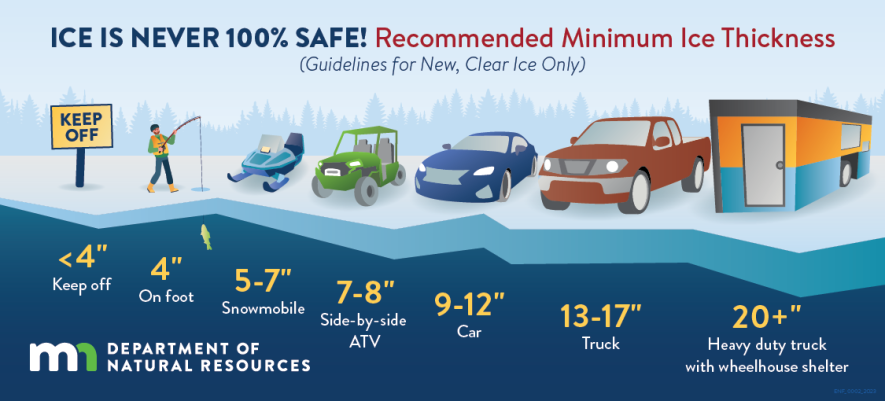Unseasonably warm weather this winter has prevented the usual ice fishing and ice activities that would normally occur this time of year.
While many lakes and rivers still have open water in southwest Minnesota, colder weather is coming and some may be tempted to venture onto the ice too soon.
The Minnesota Department of Natural Resources has been urging people to be aware of degraded ice conditions and thin ice during this transitional weather period, and to know that ice thickness can be constantly changing.
According to the DNR, no ice can ever be considered “safe ice,” but following these guidelines can help minimize the risk:
•Always wear a life jacket or float coat on the ice (except when in a vehicle).
•Carry ice picks, rope, an ice chisel and tape measure.
•Check ice thickness at regular intervals; conditions can change quickly.
•Bring a cell phone or personal locator beacon.
•Don’t go out alone; let someone know about trip plans and expected return time.
•Before heading out, inquire about conditions and known hazards with local experts.
•Parents and guardians should talk with their children about staying away from the ice unless there’s adult supervision. This includes lakes and rivers, as well as neighborhood ponds, retention ponds and anywhere ice forms.
More information is at dnr.state.mn.us/safety.
Unseasonably warm weather this winter has prevented the usual ice fishing and ice activities that would normally occur this time of year.
While many lakes and rivers still have open water in southwest Minnesota, colder weather is coming and some may be tempted to venture onto the ice too soon.
The Minnesota Department of Natural Resources has been urging people to be aware of degraded ice conditions and thin ice during this transitional weather period, and to know that ice thickness can be constantly changing.
According to the DNR, no ice can ever be considered “safe ice,” but following these guidelines can help minimize the risk:
•Always wear a life jacket or float coat on the ice (except when in a vehicle).
•Carry ice picks, rope, an ice chisel and tape measure.
•Check ice thickness at regular intervals; conditions can change quickly.
•Bring a cell phone or personal locator beacon.
•Don’t go out alone; let someone know about trip plans and expected return time.
•Before heading out, inquire about conditions and known hazards with local experts.
•Parents and guardians should talk with their children about staying away from the ice unless there’s adult supervision. This includes lakes and rivers, as well as neighborhood ponds, retention ponds and anywhere ice forms.
More information is at dnr.state.mn.us/safety.



